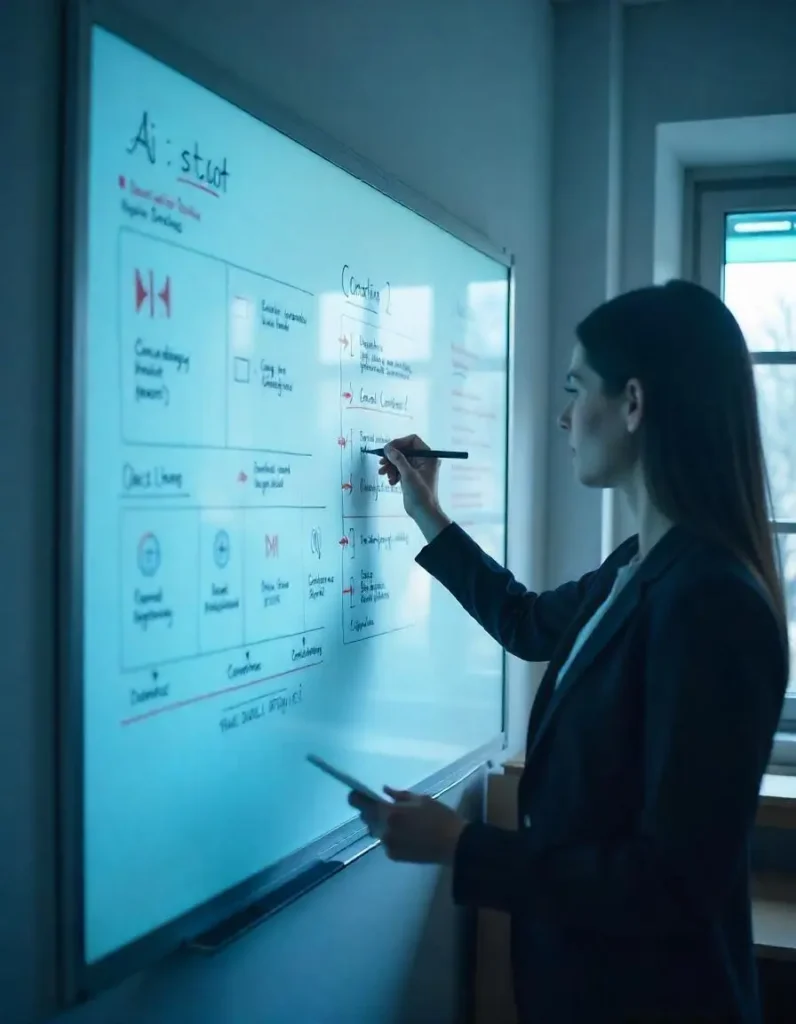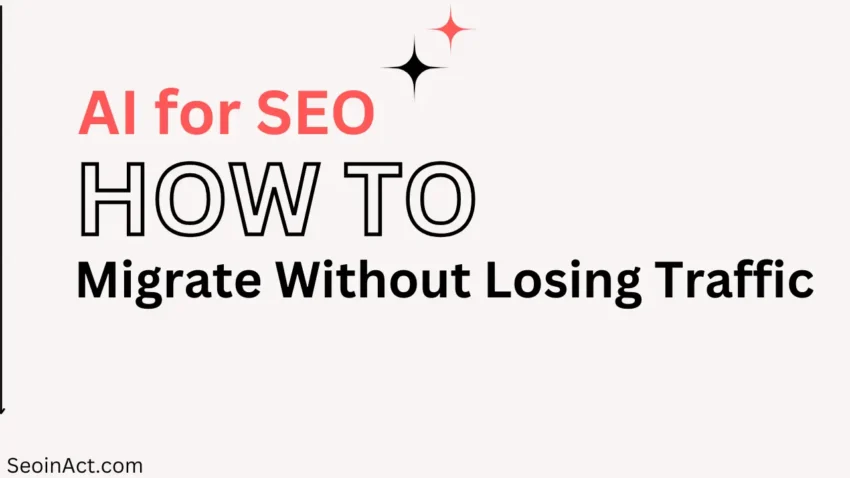In the ever-evolving landscape of online content and community building, Search Engine Optimization (SEO) remains a critical factor for discoverability and growth. For community owners with a wealth of valuable content residing on older platforms, the prospect of migrating to a new, more modern platform can be both exciting and daunting, especially when considering the potential impact on organic traffic.
Recently, the “Creator Magic” YouTube channel offered a fascinating and remarkably transparent glimpse into this very challenge. In a live stream titled “How to Use AI to Boost Your Community’s SEO”, the creator embarked on a journey to migrate a thriving community from an older Discourse platform to a new Circle. So community, all while leveraging the power of Artificial Intelligence. This wasn’t a polished tutorial but rather a raw and direct “work with me” session, inviting viewers to witness the messy reality of AI implementation, complete with planning, prompting, coding, debugging, and problem-solving.

The Mission: Preserve Traffic, Enhance SEO
The core objective of this ambitious undertaking was clear: to migrate valuable, high-traffic content from the established Discourse community to the new Circle. So platform while meticulously preserving and potentially enhancing organic search traffic. As the creator explicitly stated, “Essentially, the goal today is to preserve that traffic”. This was not just about moving posts; it was about strategically transferring knowledge and discussions that had already earned their place in search engine results pages (SERPs).
The motivation behind the platform shift was evident. The creator was already using Circle.so for the “Creator Magic” community and recognized its potential for the other business, an audio production community hosted on Discourse. The Discourse community was described as “really busy” with “loads of members” and a constant stream of posts. The new Circle. So community, in contrast, was “pretty empty at the moment”, highlighting the need to populate it with valuable content.
However, manually sifting through potentially thousands of posts to identify valuable content, reformatting it for a new platform, and ensuring SEO best practices would be an incredibly time-consuming endeavor – a task the creator admitted to “procrastinating about for ages”. This is where the promise of AI automation stepped in.
A “Work With Me” Live Stream: Transparency and Collaboration
What made this livestream particularly insightful was its format. Eschewing a pre-packaged tutorial, the creator opted for a real-time, unfiltered demonstration. As they explained, “This is going to be a very raw and direct cor and uh very real um because essentially I am going to do everything just as I would for a normal working day”. This approach not only demystified the process of using AI for such tasks but also fostered a sense of community and collaboration.
The creator actively engaged with viewers through the chat, sharing their screen, explaining their thought process, and even soliciting advice and feedback. This interactive element transformed the live stream into a dynamic problem-solving session, with the audience acting as an informal sounding board and source of potential solutions. The use of an Elgato prompter to display chat messages directly within the camera lens further enhanced this connection.

Building a SEO AI Agent: Step-by-Step
The initial plan involved creating an AI agent to automate the content migration. This agent, built within the Cursor code editor, was envisioned to perform a series of crucial tasks:
* Value Assessment: Analyze each post in the Discourse community based on metrics like impressions and click-through rate to determine its SEO value.
* Content Filtering: Discard posts that were primarily asking for specific, one-on-one feedback, as these were deemed less valuable for the broader new community. The aim was to identify posts offering a “one-to-many approach” rather than “one-to-one” interactions.
* Content Transformation: Transform the valuable posts into comprehensive how-to guides, potentially attributing the original contributors.
* Platform Integration: Post this refined content to the new Circle. So community under relevant categories using the Circle. So API.
* SEO Preservation: Create 301 redirects from the original Discourse URLs to the new Circle.so URLs maintain link equity and organic traffic.
The creator began by importing a CSV file containing a list of Discourse posts with relevant SEO metrics. To start, they decided to focus on a single post for testing and development before scaling the agent to handle the entire dataset.
The AI Arsenal: Choosing the Right Tools
A key aspect of the live stream was the deliberate consideration and experimentation with various Large Language Models (LLMs) for different sub-tasks. He articulated an understanding that different AI models excel in specific areas:
* Claude 3.5 Sonet was favoured for general chatting and writing.
* Claude 3.7 Sonet Thinking was chosen for the initial complex problem-solving involved in building the agent within Cursor.
* Gemini was recognized for its exceptionally long context window.
* ChatGPT (or a similar GPT model) was intended for initial post-analysis and value assessment.
This strategic approach to AI model selection highlighted the nuance involved in effectively leveraging these powerful tools. As the creator later configured the agent, it utilized both OpenAI (likely for models like GPT-4 for evaluation) and the Anthropic API (for Claude to handle content rewriting).
Navigating the API Maze: Challenges and Solutions
The journey was not without its significant hurdles, particularly when it came to interacting with the APIs of the two community platforms.
The initial plan was to use the Circle API directly for posting content. However, the creator’s current subscription plan limitations hit a roadblock. Direct API access with a sufficient request limit required an Enterprise-level subscription, incurring substantial additional monthly costs. This unexpected constraint forced a pivot in strategy.
The creator decided to adopt a hybrid approach, leveraging the AI agent (built-in Cursor) to process the data and then sending it as JSON to a Make.com automation. Make.com, a no-code automation platform, offered the necessary integration with the Circle.so API without the immediate need for an expensive upgrade. This showcased the practical reality of adapting AI solutions to existing platform limitations.
Even with Make.com, the integration wasn’t seamless. The creator encountered issues with API authentication, incorrect data formatting (initially using Markdown when HTML was preferred by Circle. so for proper rendering), and logical errors in the AI agent’s code. The live stream vividly illustrated the iterative nature of AI development, with constant debugging and refinement of prompts and code being necessary to guide the AI effectively. The creator’s use of `Colorama` and emojis in the Python script’s output added a touch of visual clarity to the debugging process.

Breakthroughs and Progress: Small Wins, Big Implications
Despite the challenges, the live stream witnessed several significant breakthroughs:
* The AI agent successfully processed a test post and sent the data as JSON to a Make.com webhook.
* Make.com, in turn, successfully created a post in the Circle. So, the community is based on this data.
* The creator managed to retrieve their Circle.so Community ID through API calls using Postman, overcoming an initial uncertainty.
* The agent was refined to output content in HTML format, addressing the rendering issues in Circle.so.
* The agent was further developed to loop through multiple posts in the CSV file, demonstrating its potential for scalability.
* Crucially, with the help of a viewer in the chat, the creator identified and resolved an issue with HTML escaping that was causing a 500 error when posting via the Make.com API call. This collaborative problem-solving highlighted the value of the live-stream format.
* The agent was configured to allow for the selection of different AI models for various processing stages, enabling further optimization.
Each small victory built momentum, bringing the creator closer to the ultimate goal of a fully automated content migration process. As the creator aptly exclaimed upon the first successful posting, “it works that’s so good“.
Lingering Questions and Future Steps
While significant progress was made, some challenges remained at the conclusion of the live stream:
* Line Break Formatting: Despite efforts to output HTML, inconsistencies in line break rendering persisted, requiring further refinement.
* Topic Categorization: Initially, the agent didn’t consistently place posts under the most relevant topics, indicating a need for improved AI-powered categorization logic. This was addressed by making API calls to fetch space and topic IDs.
* Image Migration: The complex task of migrating images from the old Discourse community to the new Circle.so platform was acknowledged but not fully addressed during the live stream. The creator considered ideas like downloading and re-uploading images but recognized the logistical hurdles involved.
* Link Preservation: The initial migration didn’t seem to carry over links embedded in the original Discourse posts, a crucial element for maintaining context and SEO value.
Despite these remaining issues, the creator was optimistic, recognizing that they had achieved a working Minimum Viable Product (MVP). The plan was to continue refining the AI agent off-stream to tackle the remaining challenges and ultimately run it on the entire dataset of approximately one thousand posts. The final steps involve setting up the crucial 301 redirects from the old Discourse URLs to the new Circle.so URLs, ensuring the preservation of hard-earned SEO value.
The Power and the Persistence: AI in Action
This live stream provided a compelling and realistic demonstration of AI’s potential in tackling complex SEO tasks like community content migration. It underscored that while AI offers incredible automation capabilities, the implementation process is often iterative and requires significant human oversight, problem-solving, and adaptation. The challenges encountered with API limitations, data formatting, and logical errors served as a reminder that working with AI is not always a straightforward “wham bam” solution.
However, the successes achieved – the ability to evaluate content, rewrite it with AI, categorize it (with room for improvement), and post it to a new platform – showcased the transformative power of these technologies. The “work with me” format not only demystified the process but also highlighted the value of community collaboration in overcoming technical hurdles.
As the creator concluded the stream, expressing gratitude to the viewers for their participation and assistance, the overarching message was clear: leveraging AI for SEO is a journey that requires both technical skill and a willingness to embrace the messy realities of implementation. The insights gained from this live session offer valuable lessons for anyone considering using AI to enhance their community’s SEO and navigate the complexities of platform migration.
If you found this behind-the-scenes look interesting, be sure to check out the “Creator Magic” YouTube channel for more content on leveraging technology for creative endeavors. And if you’re building your own community, consider joining the “Creator Magic” Circle.so, the community to continue the discussion and learn from others on a similar path.

